Renting a car in Okinawa significantly enhances the flexibility and convenience of exploring the island at your own pace. With a personal vehicle, you’re not bound by the schedules and routes of public transportation, allowing for a more tailored and immersive experience of your Okinawa itinerary.
During my trip to Okinawa, I decided that it makes more sense to rent a car and get to explore more points of interest. Turns out, it was the right thing to do, as public transport is not as efficient and reliable in Okinawa as it is on mainland Japan. Besides, there are many attractions which are inaccessible by bus.
In this guide, I will share how to rent a car in Okinawa, what documents you need to get your rental and how to drive around the island for peace of mind.
Table of Contents
How to rent a car in Okinawa
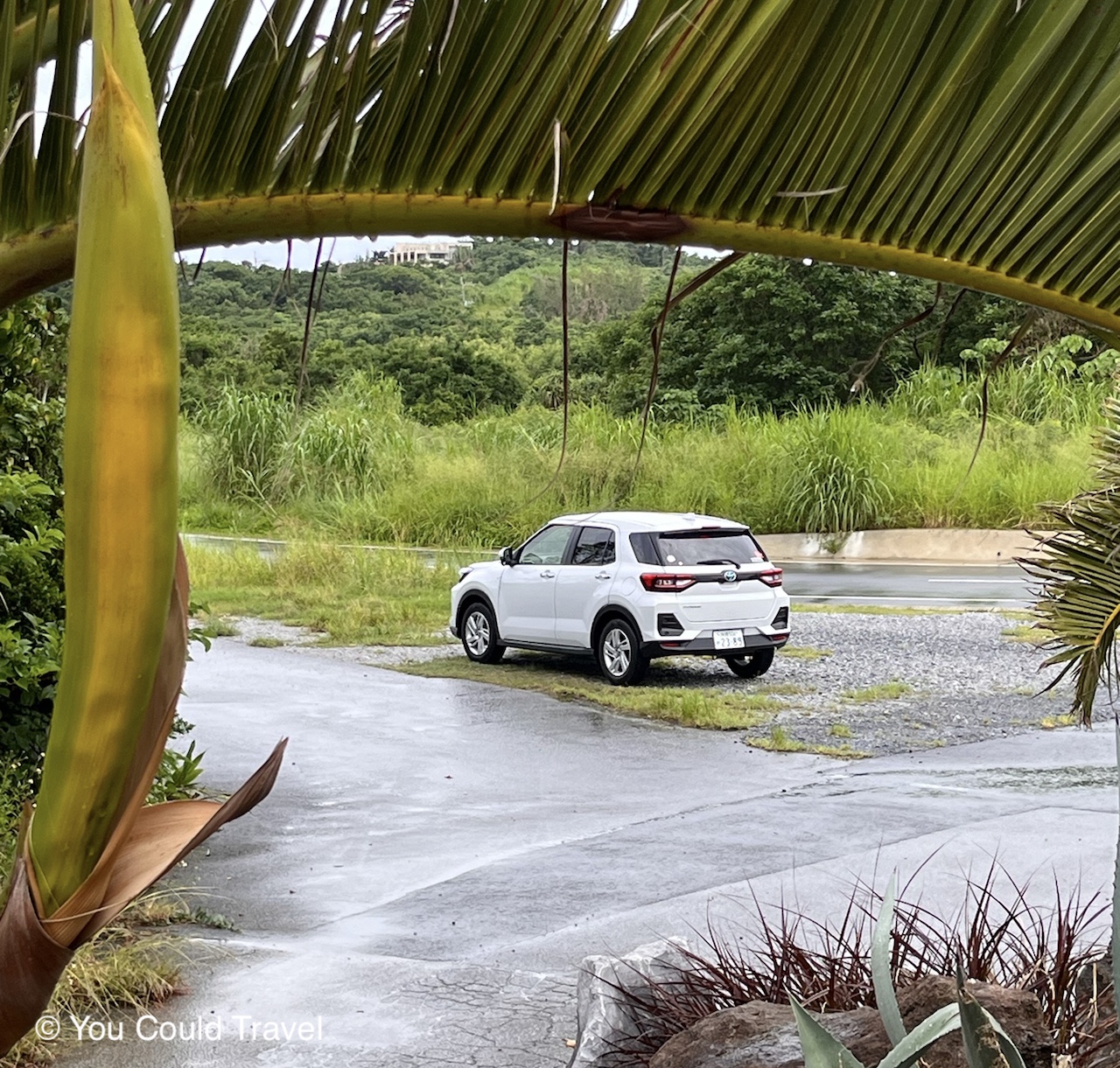
The car rental in Okinawa is a little more unusual as it relies on word of mouth. This means that you will normally get a company recommended to you by someone who is already stationed in Okinawa or has recently visited the island. That’s not to say that you cannot find Japanese rental giants there, like TOYOTA Rent a Car or NIPPON Rent-A-Car. It’s just that locals know best, and they usually have better cars in their arsenal.
After some research, I decided to rent my car from Hello Rent a Car. I am not affiliate with them, I just want to help you save time and money. The process? A little unorthodox, too. But don’t worry, I will explain.
1. Check the sort of cars available in stock. They normally update them on the main page.
2. Get in touch with them via Whatsapp. They have a little QR code on the website which links to their number. Tell them your dates of travel, the car you are interested in and the type of insurance you want. I recommend getting an automatic transmission car, ideally an SUV or cross, and full comprehensive insurance.
3. Someone will get back to you (remember the time difference) and explain the type of cars they have in stock and how much it will cost. They sent me pictures of the exact car I would get.
4. You agree with them, and they send you a contract via email. As part of their agreement with Hello Rent a Car, they offered us a free airport pickup.
5. When you arrive, connect to the wifi at the airport (or your own pocket wifi) and tell them you have arrived. They will pick you up and drive you to their rental offices. With traffic and everything it took around 20 minutes to get there.
6. Check all papers and sign the contract. Make sure to triple check that you have comprehensive insurance included. Check the type of fuel your car needs.
7. Ask the staff for an ETC card. This will cost extra, but it comes preloaded with money which, in my experience, was more than enough for the whole duration of my trip. I really did use the expressways a lot. The ETC card allows you to use to pass the expressways gates much, much faster, saving you a lot of time. It’s all automated when you enter and exit the expressways and the toll is automatically deducted from that ETC card.
8. Inspect the car, and take some pictures if you see any damage. The car we got was in pristine condition and very clean. You will notice the tank is full and you need to return the car with a full tank as well. There are some gas stations around the rental office, so take note of them for when you return.
9. Set up the car, check the indicators, and familiarise yourself with the dashboard. Then, you are good to go!
What papers do you need for renting a car in Okinawa
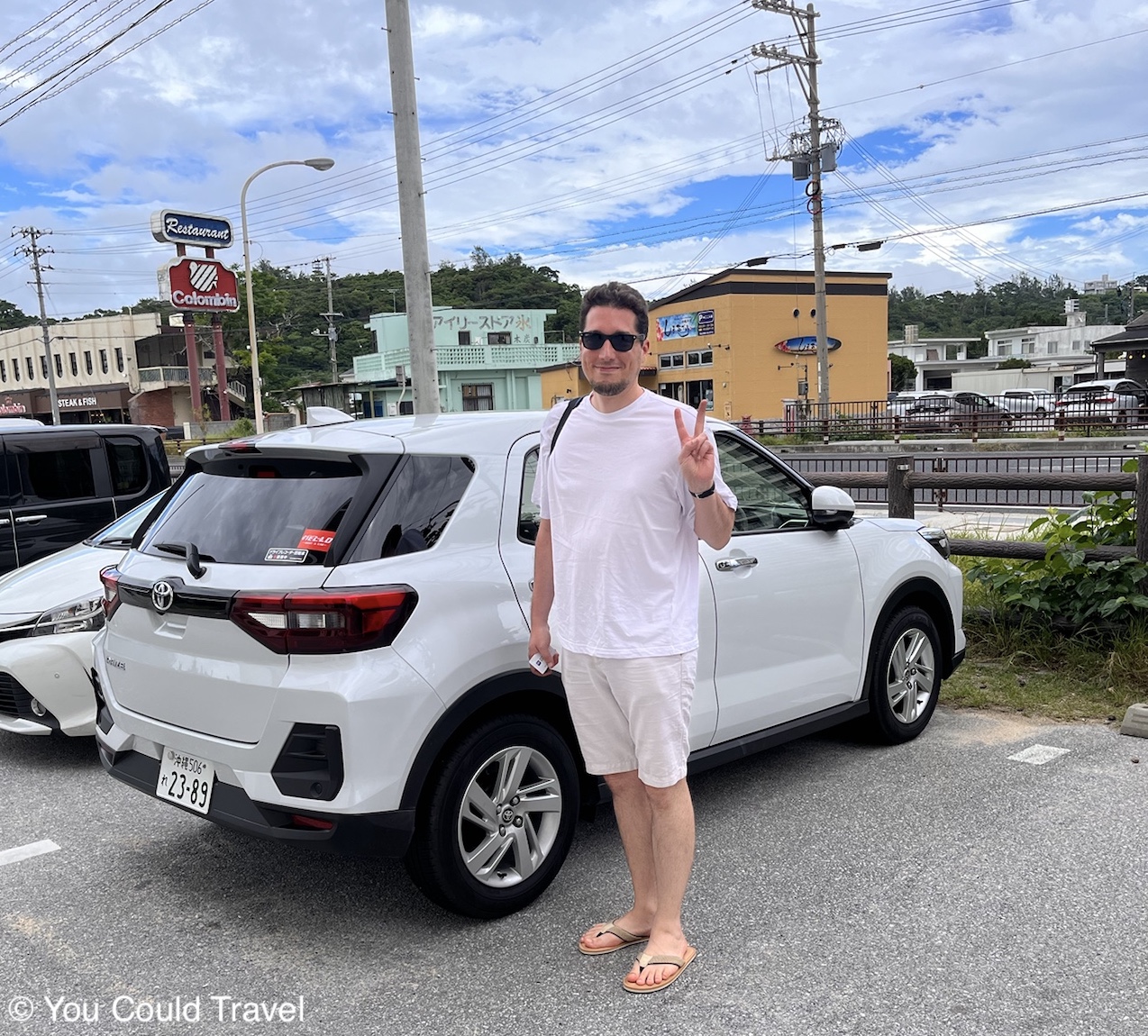
To rent a car in Okinawa, you will need one of the following types of licenses:
- Your passport, a driver’s license from your home country AND an international driving permit (international visitors)
- A Japanese driver’s license (residents of Japan)
- A Japan Operator’s Permit for Civilian Vehicles (US Forces)
How to drive in Okinawa
Keep in mind that driving rules and signs in Japan might be different from what you’re used to. For everyone’s safety, make sure to learn and understand these local traffic regulations and signs before hitting the road.
Left-hand traffic
In Japan, remember that vehicles operate on the left side of the road, and the driver’s seat is on the right. There are a few countries in the world that drive on the left, including the UK, Hong Kong, India, Singapore, Australia and New Zealand.
Seat Belts
It’s compulsory for all occupants in the vehicle to wear seat belts. Failing to do so can result in fines.
Drinking and Driving
Japan enforces a strict no-tolerance policy for drinking and driving. It’s illegal to drive under the influence of alcohol, even if the consumption occurred the day before.
Mobile Phone Use
Using a mobile phone for calls or texts while driving is prohibited and can lead to fines.
Child Seats
Children under six must be secured in an appropriate child seat. Rental companies often offer child seats, either complimentary or for a nominal fee. Ensure to specify your need for one when booking your vehicle.
Traffic Lights
In Japan, including Okinawa, traffic lights follow the familiar green, yellow, and red system used globally. However, do note that the green in the traffic lights is more akin to a turquoise rather than the deep green we normally get in other countries.
- Green Light: Indicates you can proceed. You’re allowed to go straight, turn left, or turn right, assuming there’s no oncoming traffic and it’s safe to do so.
- Yellow Light: Signals to slow down and prepare to stop. If you’re too close to the stop line or if stopping could lead to a hazardous situation, you’re permitted to continue through the intersection.
- Red Light: Means stop. No turns, either right or left, are allowed when the light is red.
- Green Arrow (Right Turns): If there’s a green arrow while the main light is red, you’re allowed to make a right turn in the direction of the arrow.
- Green Arrow (Left Turns): Similarly, a green arrow with a red light means you can make a left turn following the arrow’s direction.
Japanese Road Signs
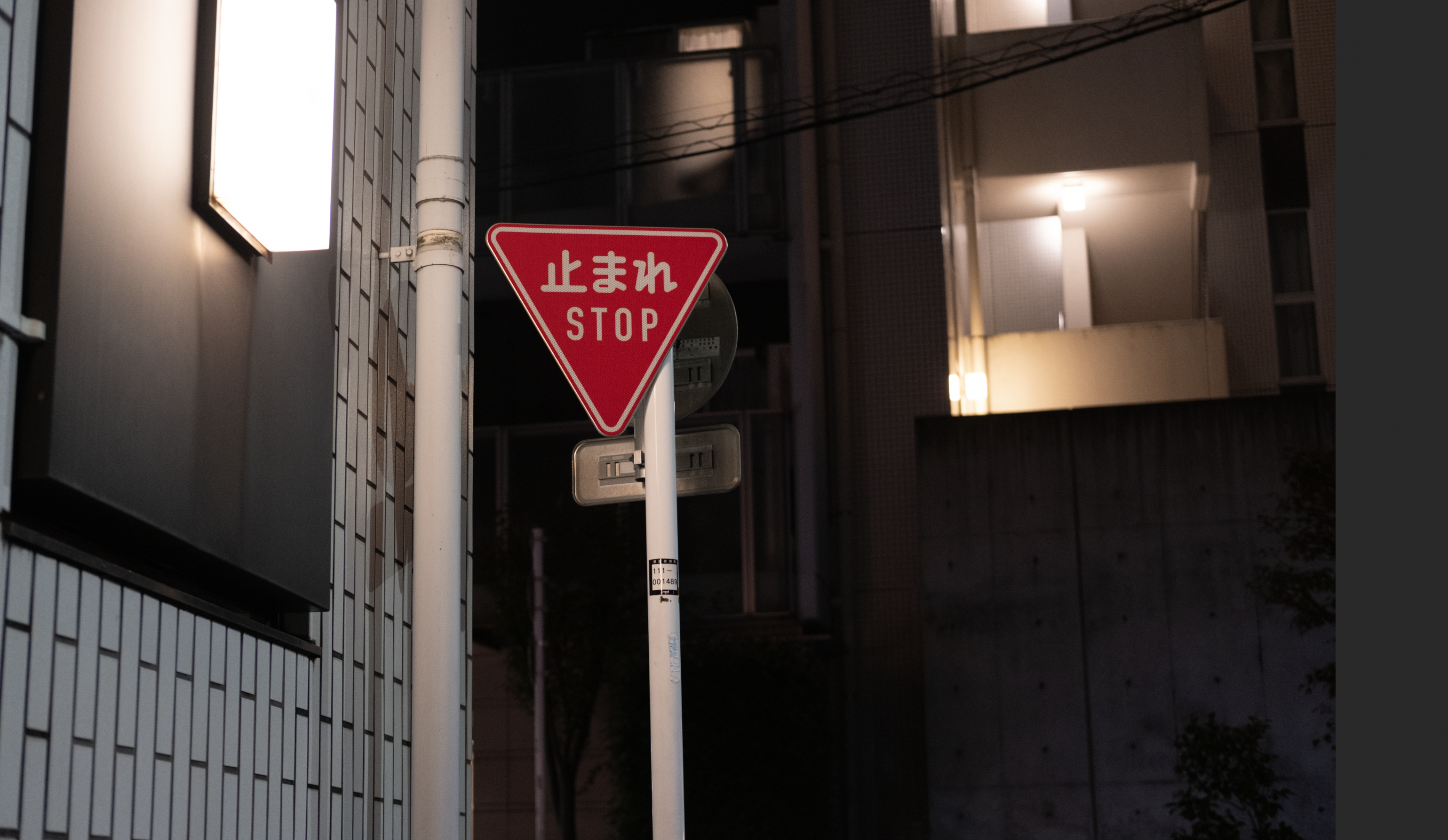
The most important thing to remember is how the stop sign looks like. It’s an inverted red triangle with the word Stop on it (in Japanese).
You will notice some areas of the road are covered in red. That’s to signal that it’s a dangerous zone, more prone to accidents. It’s imperative to pay extra attention and be more vigilant.
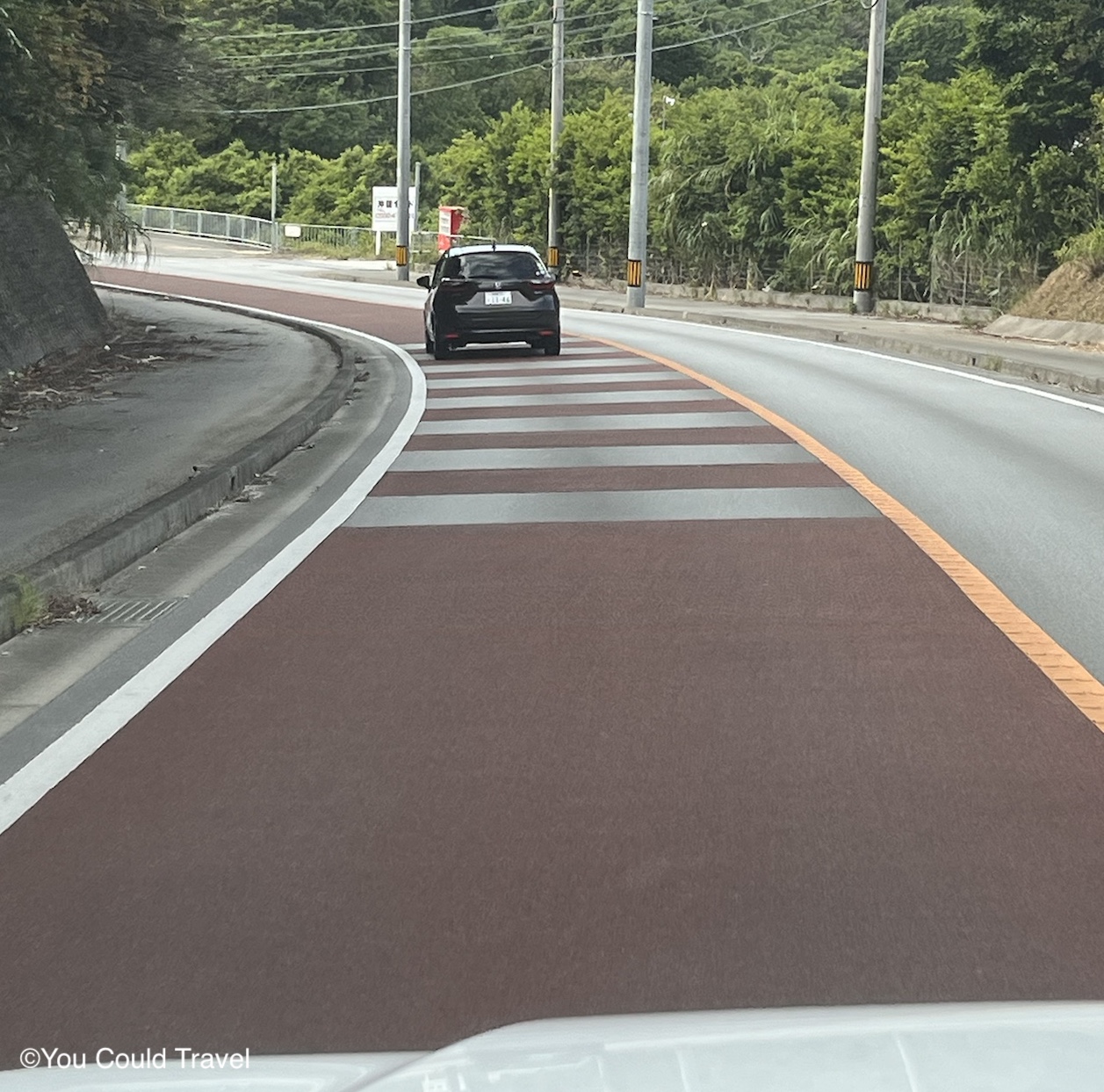
Expressways
On Japanese expressways, you’ll find toll gates labeled “ETC 専用,” indicating they are exclusively for vehicles equipped with the Electronic Toll Collection System. Only cars fitted with the necessary ETC device and holding an active ETC card can pass through these gates. If your vehicle lacks ETC equipment and a card, you should proceed through gates marked “一般” (General)
When driving in Okinawa, adhering to the speed limit is crucial, especially since limits may decrease based on weather and road conditions. Here are some essential guidelines to follow:
- Lane Usage: On expressways, the left lane is generally for cruising, while the right lane is reserved for overtaking. After passing, you should return to the left lane when it’s safe to do so.
- Lane Discipline: Avoid driving on lane markings, as it can lead to accidents. It’s important to stay within your lane and maintain a steady course.
- Expressway Rules: Remember, expressways are one-way roads. U-turns, driving in the wrong direction, or reversing are illegal and highly dangerous.
- Following Distance: Maintain a significant distance from the vehicle in front of you to reduce the risk of collisions. This distance should be doubled in rainy conditions.
- Emergencies: In case of an emergency, stopping on the expressway is only allowed on the shoulder. Ensure you signal to oncoming traffic and, if possible, move beyond the guardrail for safety.
How to park in Okinawa
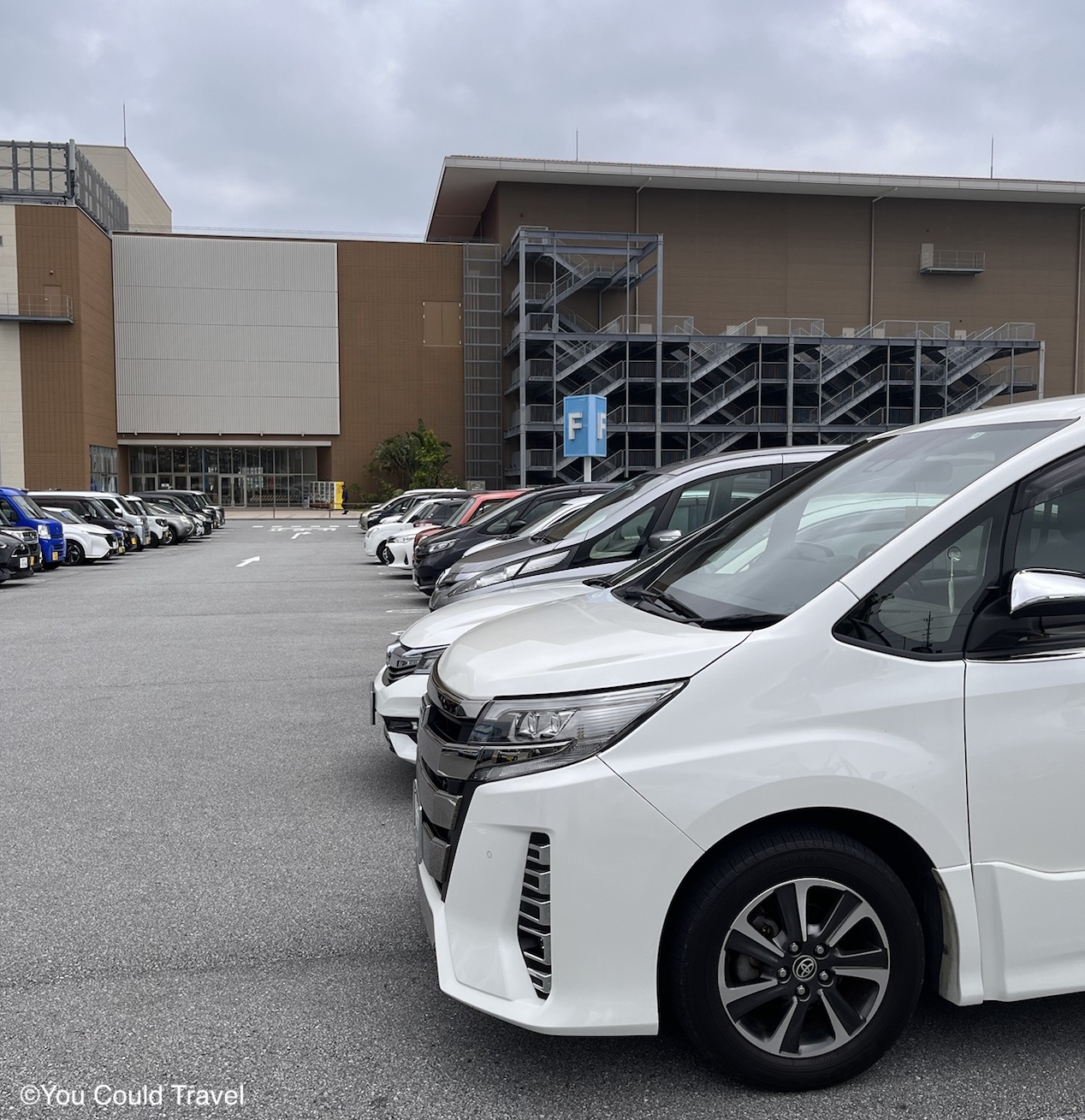
Most tourist attractions have their own free parking. For example, when I went to Okinawa World, Nago Pineapple World, Cape Hedo, Cape Zanpa and Southeast Botanical Garden, they all had their own parking spaces. However, places like Bise Fugi Tree Road had paid for parking.
Some restaurants will also have their own parking spots, but they are quite rare. Most hotels in Okinawa come with free parking for their guests.
Finding free or street parking can be quite challenging, with many opting for coin-operated parking lots. These lots often use a unique system that might be unfamiliar to newcomers: locking plates. Well, it was certainly new to me.
When you park in a space equipped with one, it automatically raises and secures your vehicle in place. To leave, you must pay at the parking lot’s fare machine, which calculates your fee based on the parking space number you input. After payment, the locking plate is lowered, freeing your car. Be aware that the plate will return to its initial position after a set time, so it’s important to exit the space swiftly post-payment. Please make sure to have cash (coins especially) with you. Trust me, from experience, you will want to save yourself the half an hour trouble trying to find an ATM to get cash out.
Oh, before I forget, in Okinawa, drivers like to reverse park into a space. It’s pretty unusual to just pull in, as we’re used to in the West. You will notice just how neat the parking areas are in Okinawa.
Driving tips for Okinawa
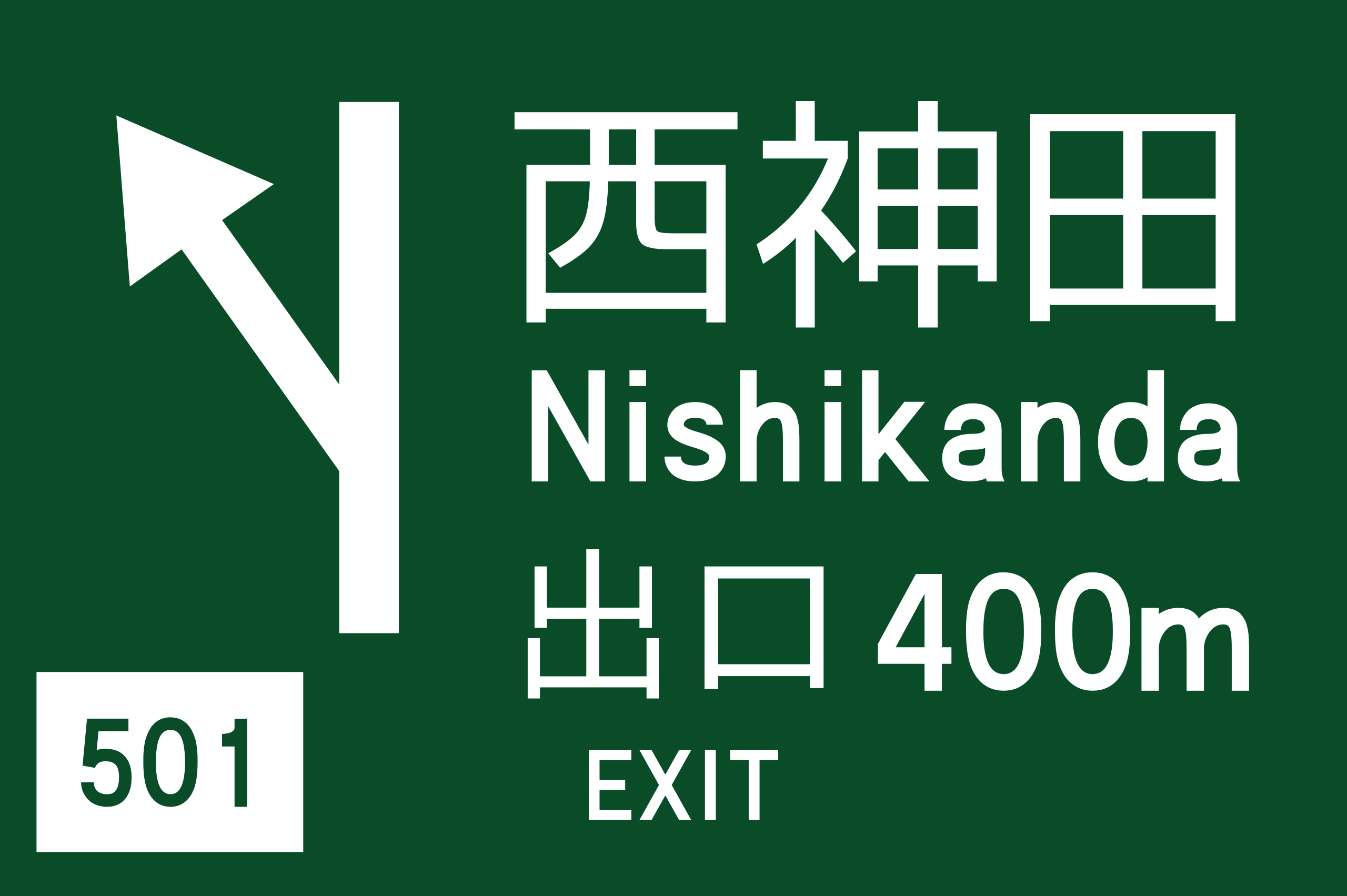
I already mentioned that getting an automatic transmission is key. It’s so much easier to drive and allows you to pay more attention to the roads and signs around than on changing gears. Besides, this comes in handy when taking smaller roads in the national park.
Naha is busy! I was honestly surprised to see how many cars are left and right, and there is a lot of heavy traffic. It’s nothing like driving on mainland Japan, where it feels a lot more chill.
The roads are well maintained, but we were told the asphalt in Okinawa contains limestone, so be extra careful when it’s wet and rainy as it can get more slippery.
In the event you need to stop your car due to an emergency, such as an earthquake, it’s crucial to do so without abruptly reducing your speed. Activate your hazard lights to alert other drivers as you gradually decelerate. Carefully check your surroundings to ensure it’s safe, then pull over to the left side of the road. Once stopped, turn off your engine and remain inside your vehicle until the shaking has ceased.
Make sure to have a pocket Wi-Fi during your trip and use Google Maps for navigation. It’s a lot easier, plus everything will be in English for you.
When fuelling, you probably won’t need to get out of your car. Most gas station attendants fuel for you, then take payment from your car window. Pretty neat!
Pay attention to your surroundings, but have lots of fun! Driving in Okinawa is actually a lot of fun, as it’s a beautiful destination. You’ll love it so much!
Frequently Asked Questions
Can foreigners rent a car in Okinawa?
Yes, foreigners can rent a car in Okinawa as long as they have a valid passport, a driving licence from their own home country and an International Driving license. It’s recommended to get comprehensive insurance when renting a car in Okinawa for your peace of mind.
Can you rent a car in Japan as a foreigner?
You can rent a car in Japan as a foreigner. We rented a car in Okinawa, and it was a much easier of a process than anticipated. I just needed to have my documents ready, sign the contract papers, and I was good to go. I’m really glad I rented a car as I got to see so much more of the island.
How much does it cost to rent a car in Okinawa?
It cost us around 100,000 yen to rent a car for 9 full days in Okinawa. This included comprehensive insurance for peace of mind and the preloaded ETC card which was enough for the whole duration of the trip. We got a white Toyota Raize 2023 with automatic transmission for this money, which I think it’s an absolute bargain. I would definitely recommend it!
How easy is it to drive in Okinawa?
It’s so easy to drive in Okinawa as everyone respects the signs. Just make sure you familiarise yourself with the Japanese road signs and remember to drive on the left-hand side. Naha it’s busier than other cities, but the rest of the Okinawa island feels really chilled and laid back. Driving on both expressways and smaller roads was very easy. Parking spaces are large enough too, just note that Okinawans love to reverse park.

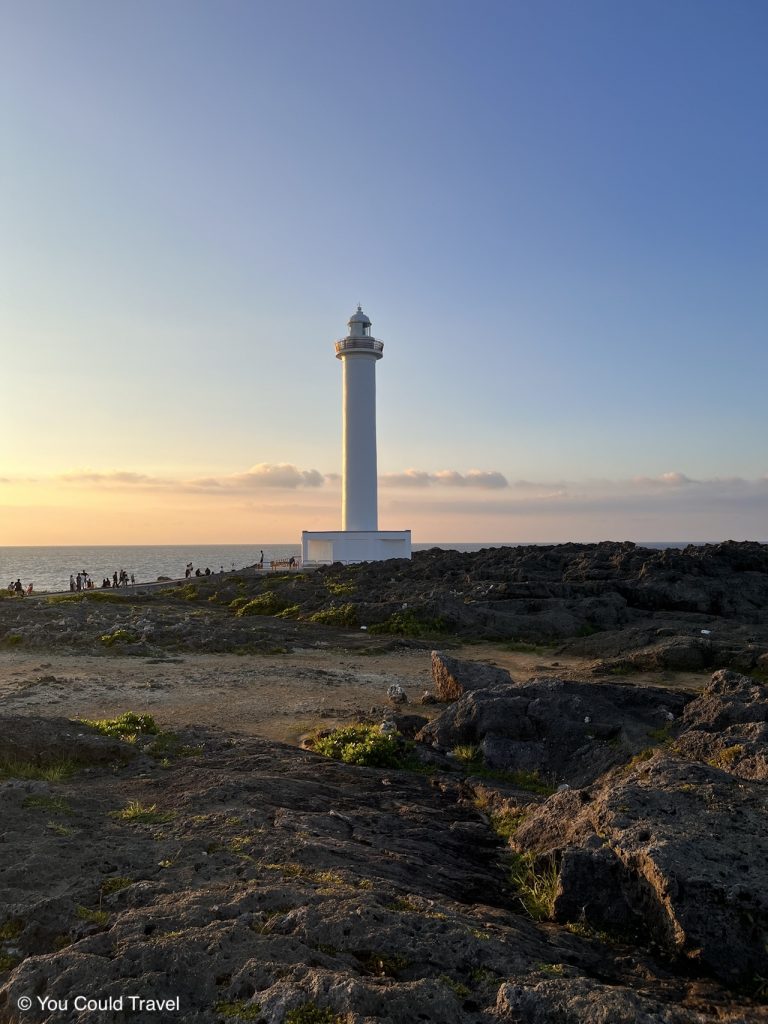
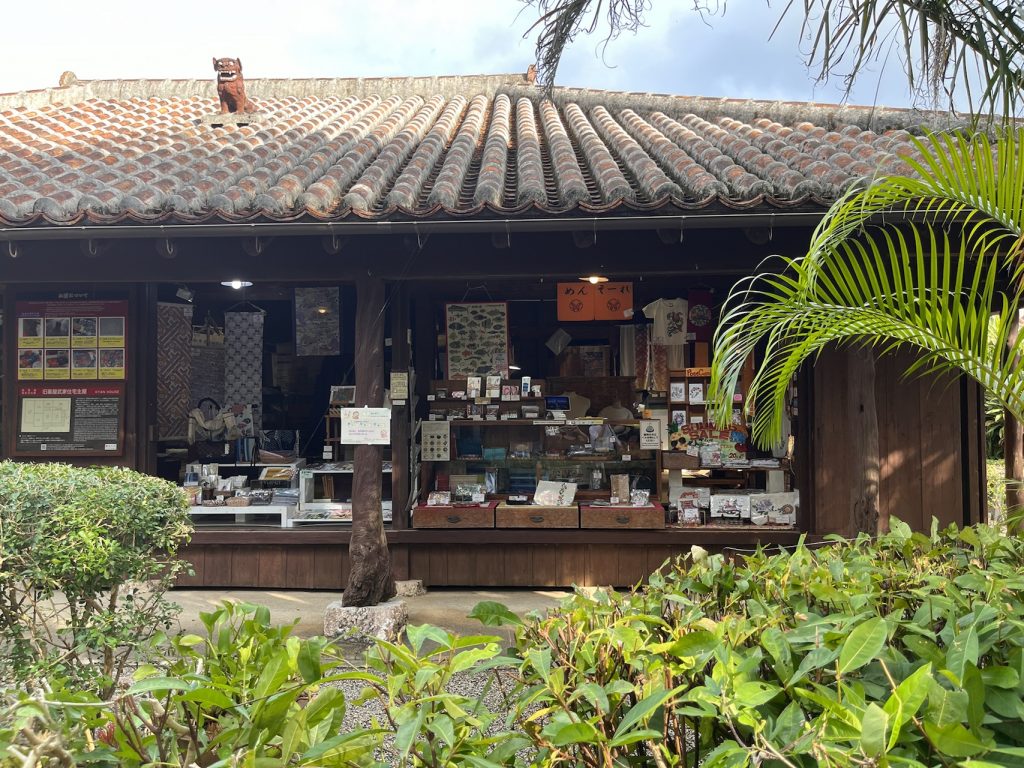

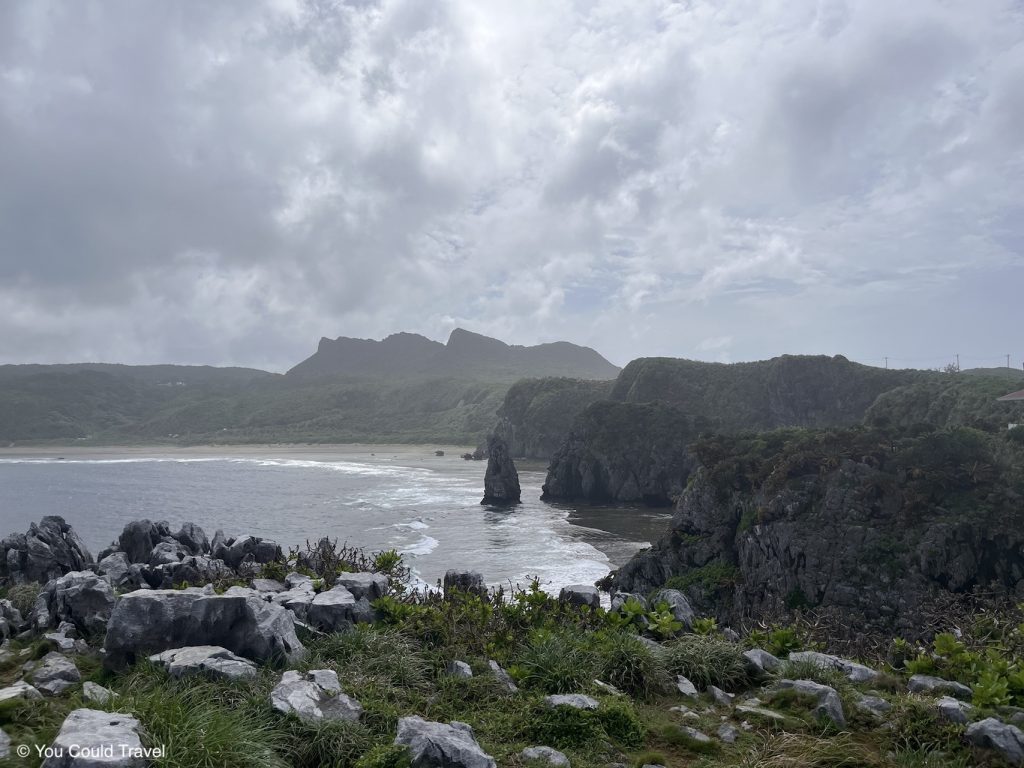
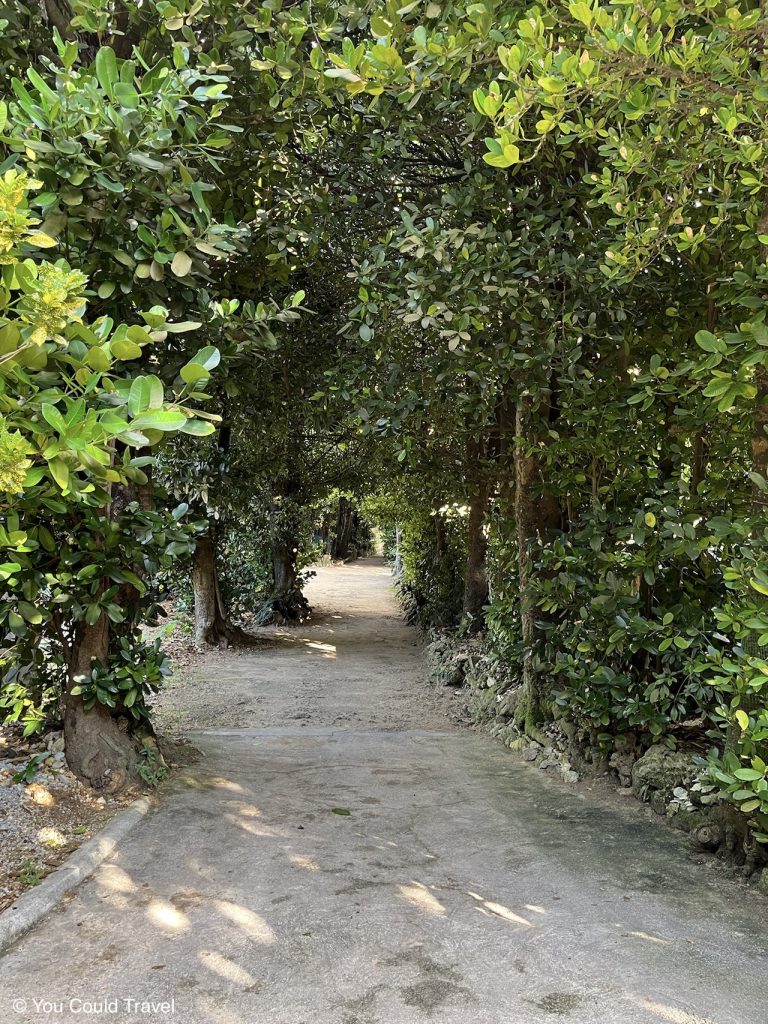
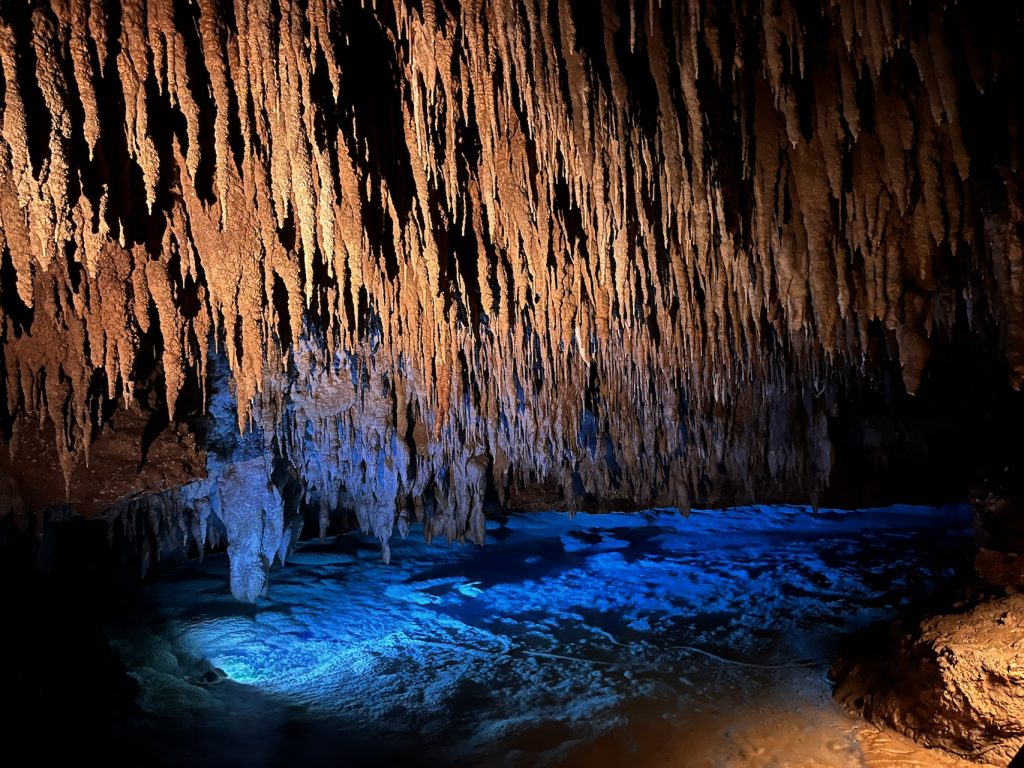


Leave a Reply